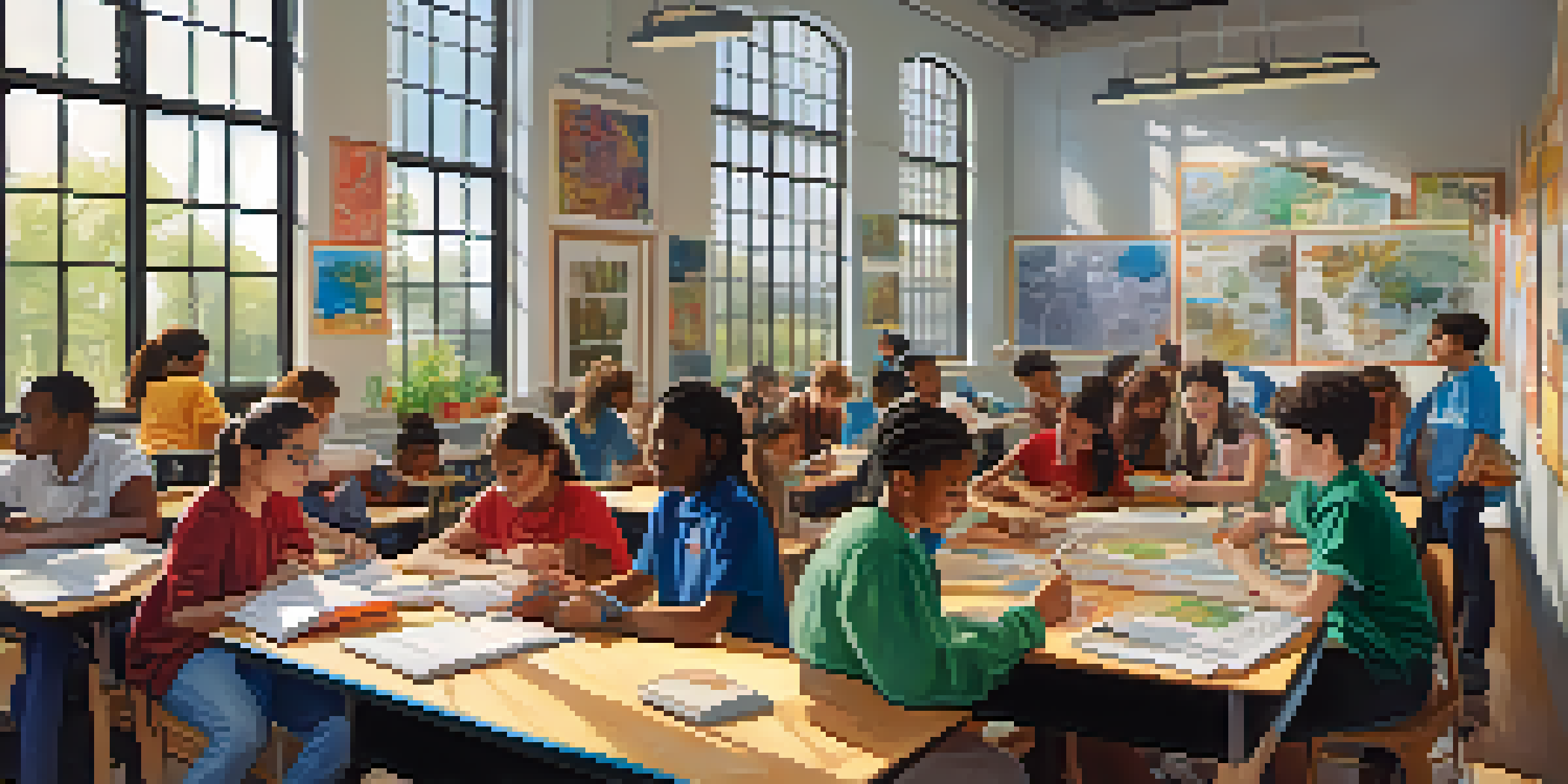Interdisciplinary Learning: A Catalyst for Social Change

Understanding Interdisciplinary Learning in Education
Interdisciplinary learning is an educational approach that integrates various disciplines to enhance the learning experience. Imagine combining elements of science, art, and history to tackle a real-world problem, like climate change. This method not only enriches knowledge but also fosters critical thinking and creativity among students. By breaking down the silos of traditional education, learners can see the interconnectedness of different fields, making their education more relevant and engaging.
The Role of Collaboration in Interdisciplinary Learning
Collaboration is the heartbeat of interdisciplinary learning. When students from different backgrounds and expertise come together, they bring unique perspectives that can lead to innovative solutions. For instance, a project involving environmental science students and graphic design majors could result in impactful campaigns to raise awareness about pollution. This collaborative spirit nurtures teamwork and communication skills, essential traits for driving social change.
Interdisciplinary Learning Enhances Skills
This approach integrates various disciplines to foster critical thinking and creativity in students.
Real-World Applications of Interdisciplinary Learning
Interdisciplinary learning finds practical applications in various fields, from healthcare to urban planning. For example, when urban planners collaborate with sociologists and environmental scientists, they can create cities that are not only functional but also sustainable and inclusive. Such projects address complex social issues, showcasing how interdisciplinary approaches can lead to tangible benefits in communities. Engaging real-world challenges makes learning more meaningful and impactful.
Fostering Critical Thinking Through Diverse Perspectives
One of the most significant outcomes of interdisciplinary learning is the development of critical thinking skills. By analyzing problems from multiple angles, students learn to evaluate information and make informed decisions. For example, a discussion on public health might involve insights from economics, psychology, and biology, leading to a more comprehensive understanding of health issues. This multifaceted approach empowers students to become thoughtful leaders and change-makers.
Collaboration Drives Innovative Solutions
By working together, students from diverse backgrounds can tackle real-world problems more effectively.
Encouraging Empathy and Social Responsibility
Interdisciplinary learning encourages students to develop empathy and a sense of social responsibility. When learners explore topics like social justice through the lenses of history, literature, and ethics, they gain a deeper understanding of societal issues. This not only broadens their worldview but also motivates them to take action in their communities. Engaging with diverse narratives fosters compassion, a crucial element for social change.
Challenges in Implementing Interdisciplinary Learning
While the benefits of interdisciplinary learning are vast, implementing it can be challenging. One significant hurdle is the traditional structure of educational institutions, which often prioritizes subject-specific learning. Additionally, educators may lack the training or resources to effectively integrate disciplines. Overcoming these challenges requires institutional support and a willingness to innovate in teaching practices.
Addressing Social Issues Through Empathy
Interdisciplinary learning encourages students to understand societal challenges and motivates them to take action.
Interdisciplinary Learning as a Vehicle for Innovation
Interdisciplinary learning serves as a catalyst for innovation, pushing boundaries and encouraging out-of-the-box thinking. By merging knowledge from various fields, students can develop groundbreaking ideas that address pressing social issues. Consider how technology and art come together in creating interactive exhibits that educate about climate change. This blend of disciplines not only sparks creativity but also inspires others to join the movement for change.
The Future of Education and Social Change
As we look to the future, interdisciplinary learning will play a pivotal role in shaping education and driving social change. The world is increasingly interconnected, and solutions to complex challenges demand collaborative approaches. By equipping students with the skills to think critically and work across disciplines, we can foster a new generation of leaders committed to creating a better society. Embracing this educational model is not just beneficial; it is essential for our collective future.